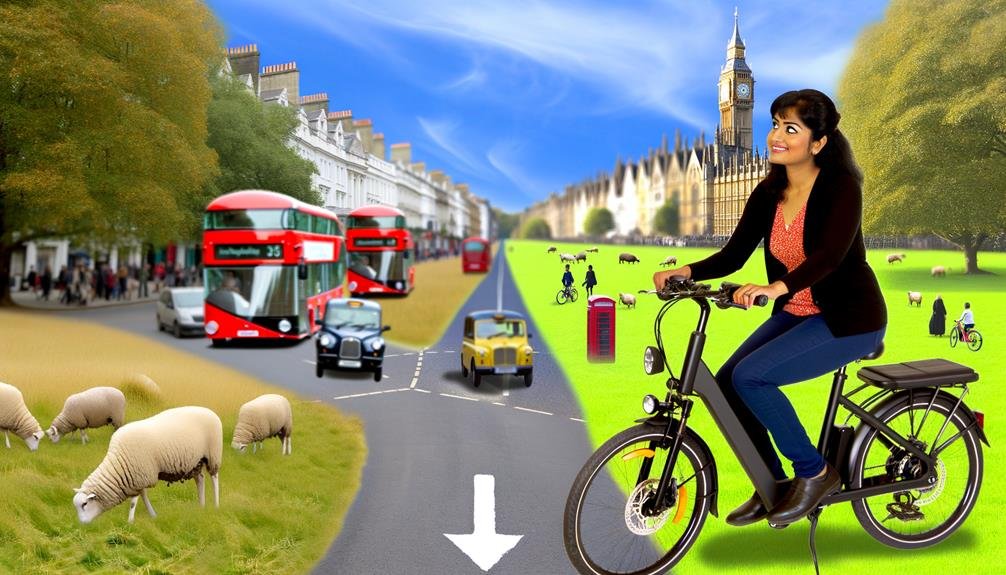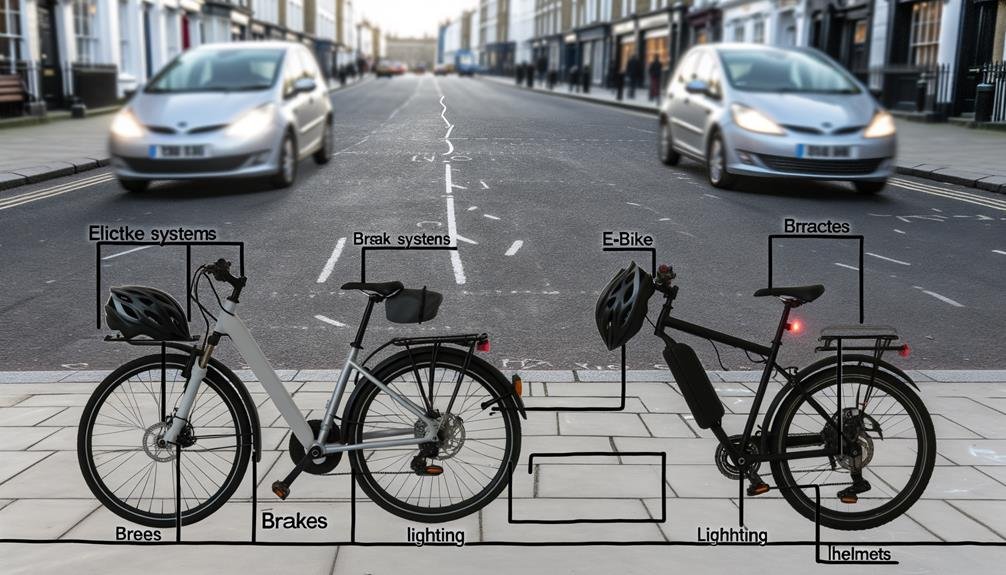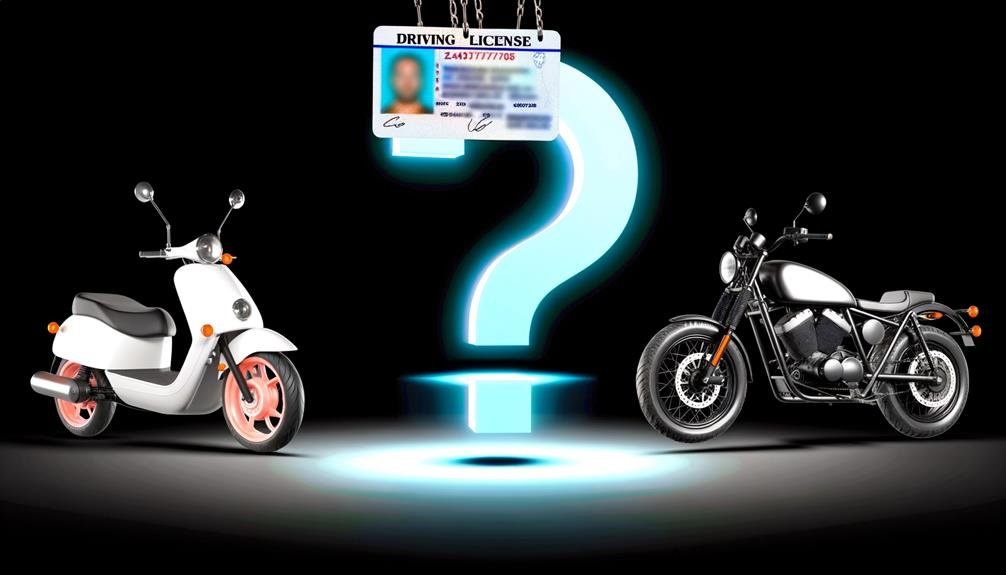Charles Miller is a veteran bike enthusiast with over 12 years of experience dealing with bikes as a mechanic. Despite immense love and expertise for...
Just last week, we spotted a group of cyclists breezing down London's busy streets, not on traditional bikes, but on electric ones. It's clear that electric bikes, or e-bikes, are gaining popularity in the UK, but what are the rules surrounding their use?
Are they legal to ride on public roads and cycle paths? And if so, are there any specific requirements or restrictions in place? We're here to break down everything you need to know about riding an e-bike in the UK.
But before we get into the details, let's first understand what exactly an e-bike is and why it's become such a hot topic.
- Key Takeaways
- Understanding UK's Electric Bike Laws
- Legal Requirements for E-bikes
- E-bikes on Roads and Cycle Paths
- Helmet Laws for E-bike Riders
- Licences and Electric Bikes
- Insurance for E-bikes in UK
- E-Bike Vs. Traditional Bike Safety
- Beneficiaries of Using E-bikes
- Frequently Asked Questions
- Conclusion
Key Takeaways
- Electric bikes in the UK must adhere to EAPC regulations to be exempt from licensing, registration, and insurance requirements.
- E-bikes that exceed 15.5mph or 250w require registration, tax, and a driving license.
- Riders must be at least 14 years old to ride electric bikes on public roads.
- Wearing a helmet is highly recommended for e-bike riders in the UK, although it is not legally required.
Understanding UK's Electric Bike Laws
Getting to grips with the UK's electric bike laws, it's crucial to know that no license, registration, or insurance is required for EAPC-compliant electric bikes. These are e-bikes that don't exceed 15.5mph or 250w. For us, it's as simple as hopping on and riding off. But there are some caveats to keep in mind.
If you're thinking of getting an e-bike in the UK that's more powerful or faster, it's considered a speed pedelec and it's a different ball game. These require registration, tax, and a driving license. We don't want to be caught on the wrong side of UK law, do we?
One of the key aspects of understanding UK's electric bike laws revolves around age restrictions. It's good to remember that those under 14 aren't permitted to ride electric bikes on public roads.
We're also allowed to have throttles on our e-bikes, especially those bought in 2016 or later, but there are speed and pedaling limitations to follow.
Lastly, while electric bikes are perfectly legal on UK roads, modifying them beyond allowed specifications can render them illegal. We're all in this together, so let's ride responsibly.
Legal Requirements for E-bikes
Diving into the legal requirements for e-bikes in the UK, we need to remember that they're exempt from licensing, registration, and insurance if they adhere to EAPC guidelines. It's entirely legal to ride these electric bikes on UK roads and paths where regular bicycles are allowed, as long as your ebike meets the EAPC rules.
Here are the specific requirements:
- The ebike mustn't exceed 15.5mph and have a motor no more powerful than 250 watts.
- Riders must be at least 14 years old.
- Throttle bikes purchased after 2016 must assist without pedaling up to 6km/h and cut off if you're not pedaling.
If your ebike doesn't meet these criteria, it's considered a moped or motorcycle and needs:
- Registration and a licence to ride.
- Insurance and a helmet when on the road.
E-bikes on Roads and Cycle Paths

We're now turning our attention to the practicalities of e-bikes on roads and cycle paths in the UK.
It's essential to understand the unique regulations for e-bikes and the rules for pathway riding. This knowledge ensures a safe, legal, and enjoyable e-biking experience.
UK E-bike Regulations
Navigating the world of UK e-bike regulations is essential to understand the requirements for riding an e-bike. In the UK, e-bikes do not require a license, registration, or insurance. They are treated just like pedal bikes as long as they are EAPC-compliant.
To ride an e-bike on UK roads or cycle paths, there are specific rules that must be followed. These rules are clearly outlined on the government website. Here's a brief breakdown of some key points:
- E-bikes do not need a license or registration if they meet EAPC rules.
- Riders must be 14 years of age or older.
- Electric bikes must have a speed limit that cuts off assistance at 15.5 mph.
It's important to familiarize yourself with these regulations to ensure you are riding your e-bike within the legal requirements.
Pathway Riding Rules
Having established the general e-bike regulations in the UK, let's now focus on the specific rules pertaining to riding these bikes on roads and cycle paths. If you're riding electric bikes that comply with Electrically Assisted Pedal Cycles (EAPC) regulations, you can use them on cycle paths and roads just like traditional bikes. No need for license, registration, or insurance. Here's a quick guide:
| EAPC-compliant | Non-compliant | |
|---|---|---|
| Use on cycle paths/roads | Yes | No |
| License/Registration/Insurance | No | Yes |
| Speed | ≤ 15.5mph | > 15.5mph |
Helmet Laws for E-bike Riders
Surprisingly, in the UK, there's no legal requirement for e-bike riders to wear a helmet when cruising on public roads or cycle paths. Yes, you heard us right. Despite the widespread use of electric bikes, helmet laws for e-bike riders aren't as stringent as you might think.
However, it's critical to note that the absence of a law doesn't mean you shouldn't wear a crash helmet. We'd like to highlight three crucial points:
- Even though it's not legally binding, wearing a helmet is highly recommended. It's a safety measure that can't be overstated, particularly given the speed and power of electric bikes.
- Helmet laws may vary on private property or specific areas within Great Britain and Northern Ireland. Always check local guidelines.
- Wearing a helmet can significantly reduce the risk of head injuries should an accident occur.
Licences and Electric Bikes

While ensuring our heads are safely protected is a key consideration, another vital aspect to bear in mind when riding an electric bike in the UK is the regulations around licences. Contrary to what some may think, you don't always need a licence to ride an electric bike, or as they're formally known, electrically assisted pedal cycles (EAPC). These bikes must have pedals that can be used to propel it, a motor that won't assist you when you're travelling more than 15.5mph, and a motor that has a maximum power output of 250 watts.
However, it's important we mention that not all e-bikes fit this description. For example, electric bikes with a 'twist and go' throttle or those with speeds above 15.5mph and 250 watts are classified as speed pedelecs and these do require a licence. They need to be registered, taxed, and the rider must hold a valid driving licence.
It's always better to be safe than sorry, so we recommend checking if your e-bike falls within the EAPC rules before hitting the road.
Insurance for E-bikes in UK
As we move on to discuss insurance for e-bikes in the UK, it's important to note that mandatory insurance rules vary depending on the type and speed of the bike.
We'll look into the specifics of coverage details and limitations, as these can differ significantly. Understanding these elements is crucial to ensure you're riding legally and are adequately covered in case of accidents or theft.
Mandatory E-bike Insurance
Navigating the complexities of e-bike insurance in the UK, it's important to know that regular electric bikes, complying with EAPC regulations, don't actually require mandatory insurance. However, not all e-bikes fall under this category.
- Speed pedelecs: These electric bicycles with higher motor assistance, exceed 15.5mph or 250w, and thus need to register, have mandatory e-bike insurance, and need a driving licence. Road users must also pay vehicle tax and wear a crash helmet on public highways.
- Non-compliant e-bikes: These also need to register, require a driving licence, and carry insurance.
- Throttle e-bikes (2016 onwards): These have specific rules.
Coverage Details and Limitations
Diving into the specifics of e-bike insurance in the UK, it's crucial to understand the coverage details and limitations that vary depending on your bike's classification.
Electrically assisted pedal cycles, or EAPCs, don't need a number plate, insurance, or tax, provided they meet speed restrictions and use an electric motor to assist pedalling.
However, if your e-bike falls outside the EAPC regulations, such as electric scooters or speed pedelecs exceeding 15.5mph, it's treated like a motor vehicle.
In such cases, you're required to register and insure your e-bike, and you'll need a driving licence.
As we go electric, it's essential to be aware of these nuances to ensure we're both legal and protected.
E-Bike Vs. Traditional Bike Safety

While it's clear that both e-bikes and traditional bikes have their own unique set of regulations, it's crucial we delve into the safety aspects of both to fully understand their differences.
In recent years, e-bikes have become increasingly popular, thanks to the electrical assistance they provide, making cycling accessible to more people.
E-bike vs. traditional bike safety can be summarized as follows:
- Electrically assisted pedal cycles (EAPC) are treated as normal pedal bikes if they're compliant. This makes e-bikes an ideal choice for those wanting a small electric boost while still enjoying traditional cycling.
- Speed Pedelecs, or faster e-bikes, are considered more akin to motorcycles and thus require additional safety measures.
- Non-compliant e-bikes need to be registered with the DVLA and require a driving license, insurance, and helmet.
Ultimately, safety regulations aim to ensure a safe cycling environment for everyone. Whether you choose an e-bike or a traditional bike, it's important to understand and adhere to these regulations.
Always remember, your safety and the safety of others is paramount.
Beneficiaries of Using E-bikes
Now that we've examined the safety aspects of e-bikes, let's shift our focus to the numerous advantages they offer to users.
Recognized beneficiaries of using e-bikes are those who wish to engage in active travel. With their electrically assisted pedal cycles, e-bikes make it easier for people to maintain or even increase their speed, particularly on challenging terrains like electric mountain trails.
E-bikes, including pedal bikes with electric support, reduce overall journey time by 29%, making commuting more efficient. They're not just for adventure seekers but also for daily commuters, especially in hilly areas where pedals must work extra hard.
E-bikes are also convenient for carrying heavier loads, so they're handy for shopping trips or when you have work equipment to lug around. And let's not forget their contribution to improved air quality and reduced congestion. These features make longer commutes more manageable and our cities cleaner.
As with traditional pedal bikes, studies show that e-bike users have similar crash rates – another reason to consider this mode of transport. So, whether you're an adventure buff or a daily commuter, e-bikes have something to offer.
Frequently Asked Questions
Can You Ride an Electric Bike on the Road in the Uk?
Yes, we can ride electric bikes on UK roads. They're governed by UK regulations, ensuring pedestrian safety and minimal traffic impact. E-bike maintenance, charging stations, environmental benefits, and health implications are all considerations.
Why Are Electric Scooters Illegal in UK but Not Electric Bikes?
We're tackling scooter regulation differences and electric bike benefits. Scooter safety concerns and UK law evolution have made electric scooters illegal, but electric bikes aren't. However, future legal changes may shift public opinion on these electric vehicles.
Can You Do Ride London on an Electric Bike?
We're able to participate in Ride London with an e-bike, respecting cycling etiquette and e-bike regulations. Battery longevity, charging stations, and e-bike maintenance matter. Also, consider the health benefits and environmental impact.
Is It Law to Wear a Helmet on an Electric Bike Uk?
"We're often asked about helmet enforcement and legal implications for electric bike riders in the UK. It's not law to wear a helmet, but for safety measures, we strongly recommend it. Public opinion and cycling culture agree."
Conclusion
In summary, we can't stress enough how liberating it's to ride an e-bike in the UK! Not only are they fully legal on public roads, but the requirements are a breeze!
No need for licenses, registration or insurance. Just be 14 years old, and ensure your e-bike doesn't exceed 250 watts or 15.5mph. Remembering to wear your helmet, you're ready for an exhilarating ride!
E-bikes truly offer a revolutionary, safe and efficient way of navigating the UK's bustling streets.

Charles Miller is a veteran bike enthusiast with over 12 years of experience dealing with bikes as a mechanic. Despite immense love and expertise for his Tacoma, he rides his Trek Ebike more. Anytime you meet him, you’ll either hear him talking about Bikes, or writing about all things bikes and cars on this blog.
More Posts


